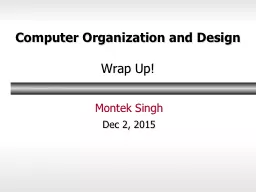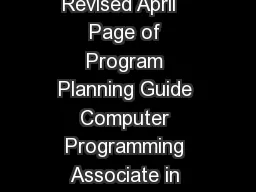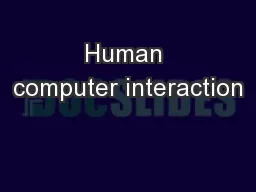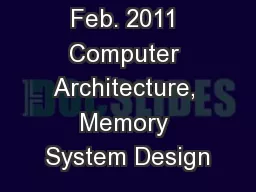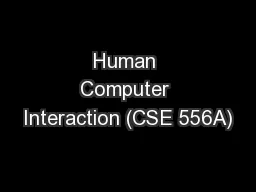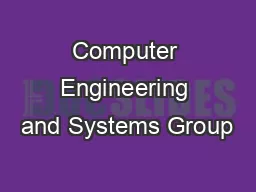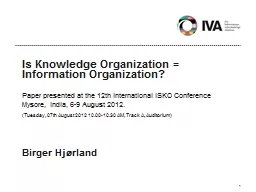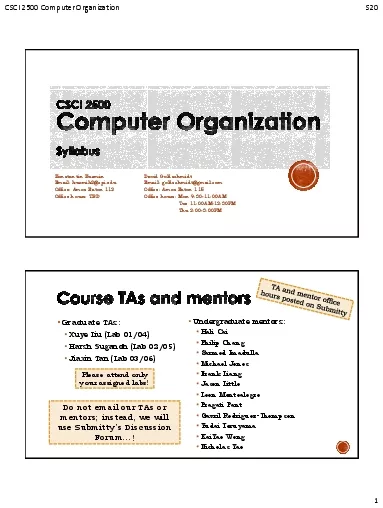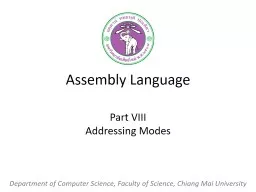PPT-Computer Organization and Design
Author : calandra-battersby | Published Date : 2016-07-28
Wrap Up Montek Singh Dec 2 2015 What else can we do to improve speed Multicoremultiprocessor Use more than one processor multiprocessor called multicore when
Presentation Embed Code
Download Presentation
Download Presentation The PPT/PDF document "Computer Organization and Design" is the property of its rightful owner. Permission is granted to download and print the materials on this website for personal, non-commercial use only, and to display it on your personal computer provided you do not modify the materials and that you retain all copyright notices contained in the materials. By downloading content from our website, you accept the terms of this agreement.
Computer Organization and Design: Transcript
Download Rules Of Document
"Computer Organization and Design"The content belongs to its owner. You may download and print it for personal use, without modification, and keep all copyright notices. By downloading, you agree to these terms.
Related Documents

